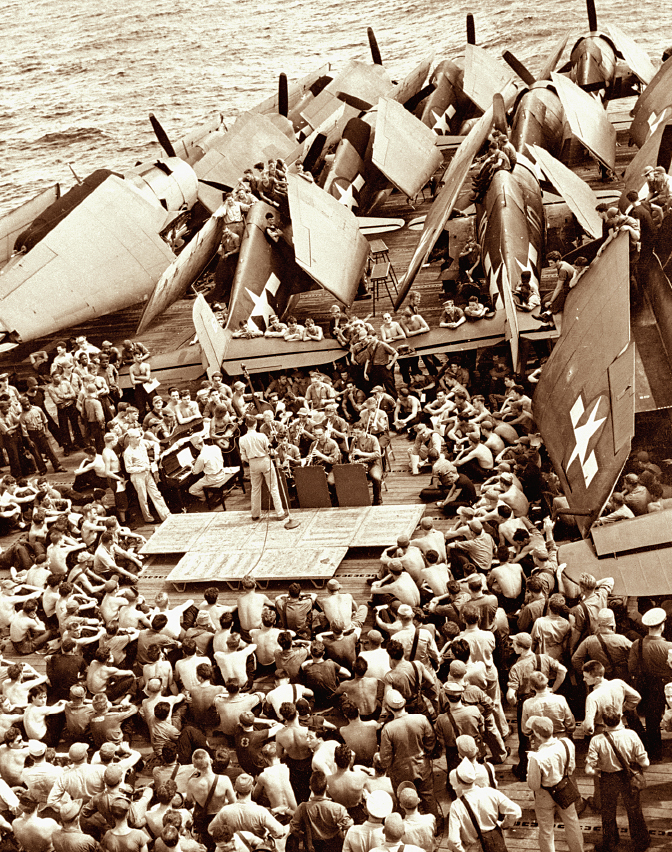The Late Twentieth Century

Of all the conflicts in the war-ridden twentieth century, World War II was the most terrible. Here the crew of an aircraft carrier in the Pacific takes time out for a jazz concert. Bettmann/CORBIS.
Only twenty-one years, from 1918 to 1939, separated the two cataclysmic wars of the twentieth century. It was an uneasy period. The devastation of World War I had stunned artists as well as everybody else, and the freewheeling, avant-garde experimentation that had marked the prewar period now played a smaller role. It gave way to the trends we examined in Chapter 22: a turn back to more accessible music, including the use of popular styles, and attempts to reestablish solid standards and norms. Even Schoenberg’s serialism of the 1920s (see page 327) can be seen in this light as a kind of stylistic consolidation.
These efforts were undercut by a new round of devastating events. First came the economic depression, long and worldwide, that began in the late 1920s. Then, in the 1930s, the ominous rise of Hitler and the unbelievable (and, by many, disbelieved) tyranny of Stalin led to a second world war. With the Japanese attack on Pearl Harbor at the end of 1941, the United States was thrown into this war to an extent that made our involvement in World War I seem minor. The occupation of France, the siege of Leningrad, the bombings of London, Dresden, and Tokyo, the mass murders in the concentration camps, and the detonation of atom bombs over Hiroshima and Nagasaki — these events were virtually impossible for human beings (including artists) to take in. History seemed to be showing that all human conceptions of the world were inadequate.
In music, these events and uncertainties helped to prompt a new phase of experimental modernism in the 1950s and 1960s. In some respects this phase was even more radical and searching than the avant-garde before World War I. Just as with that earlier avant-garde, however, the challenge of new ideas stimulated a consolidating, consoling reaction. By the 1970s yet another set of styles had begun to appear, turning away from the most extreme implications of the second phase of radical modernism. Today the avant-garde of the 1950s is a somewhat distant memory, and concert music composition is dominated by the styles that arose in reaction to it. In this chapter we sample both of these stylistic waves.
